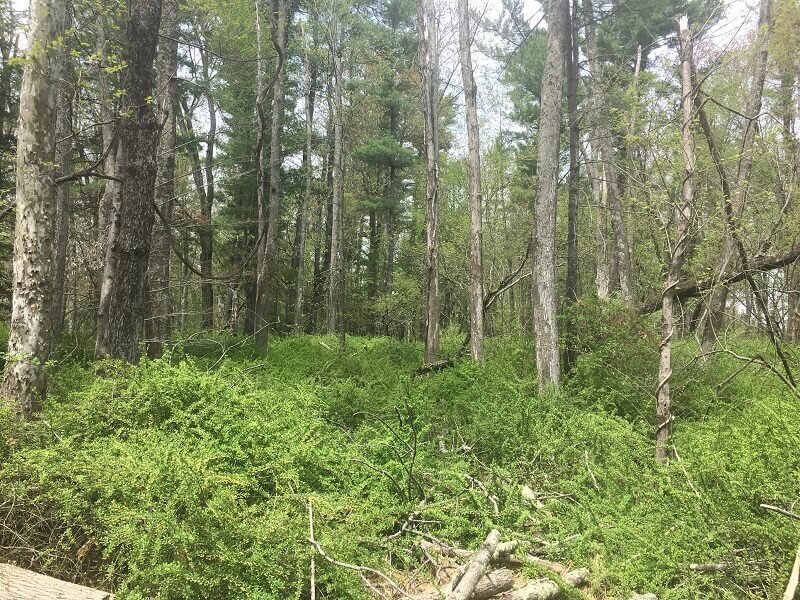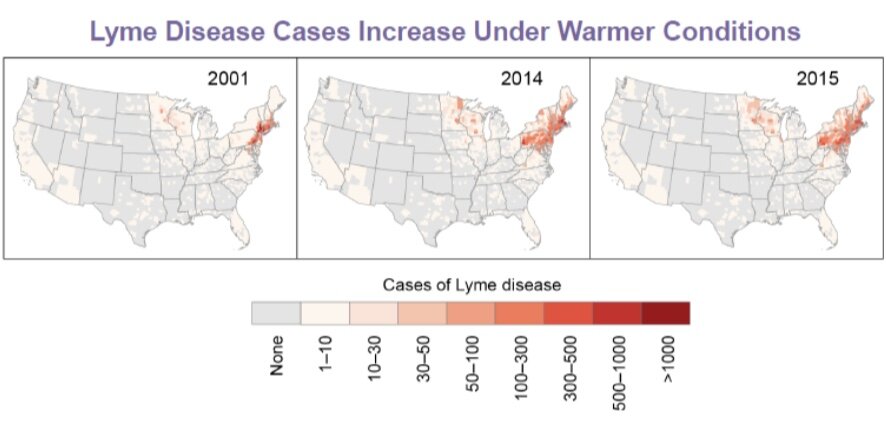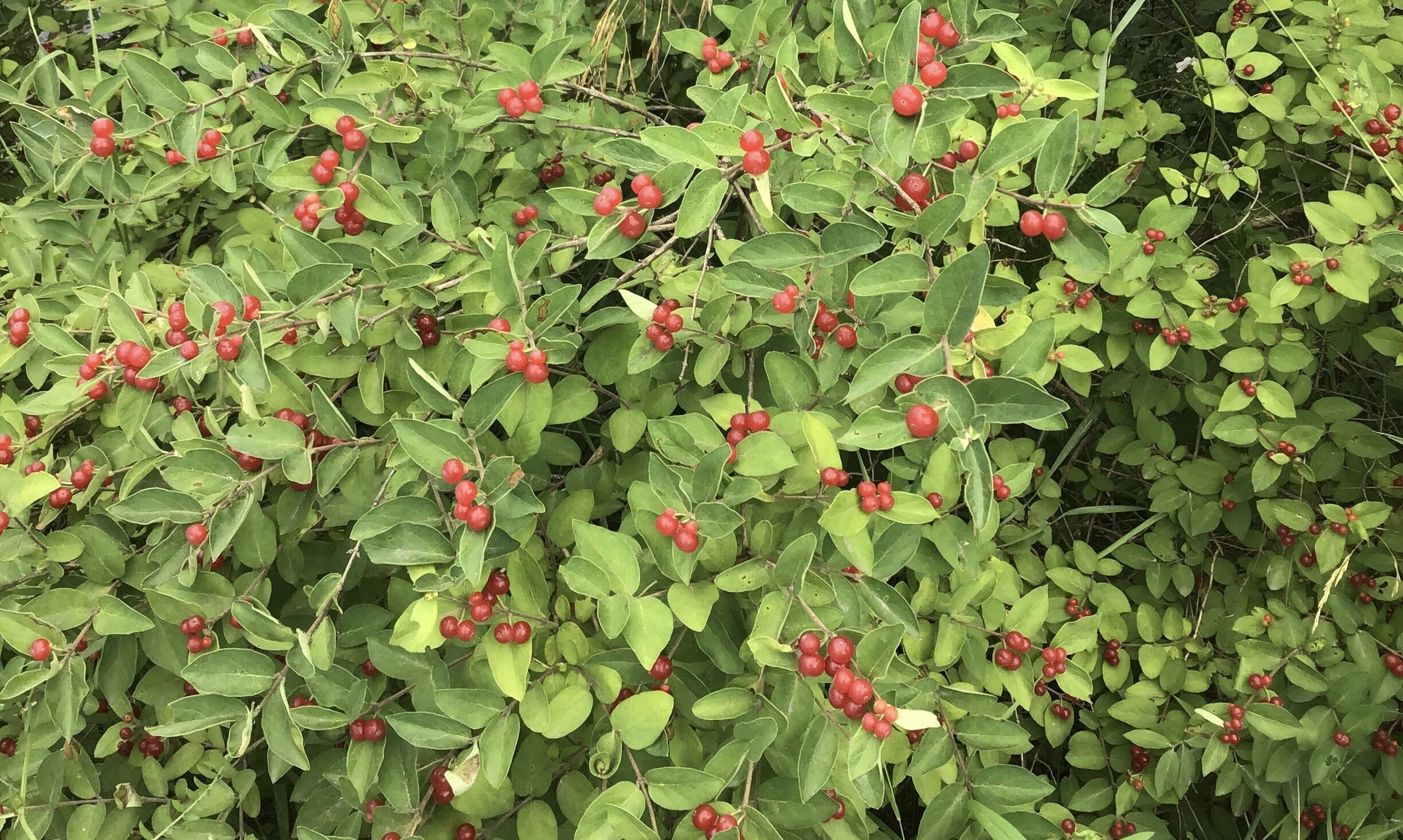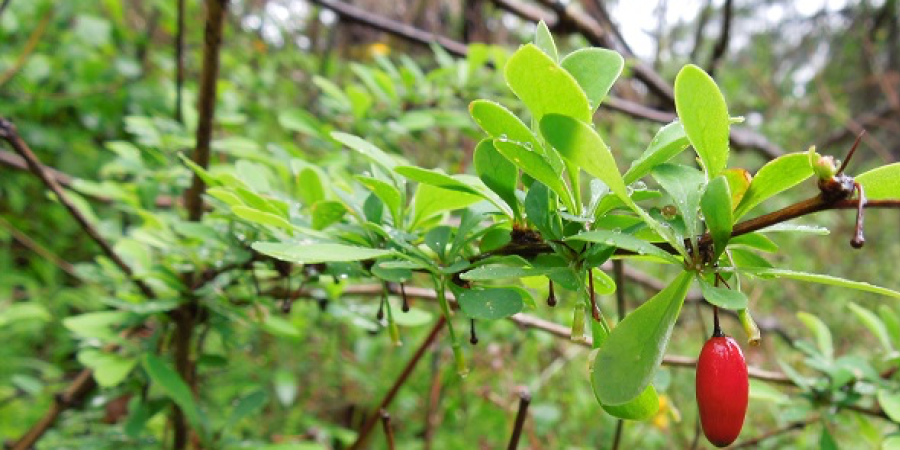While out looking at riparian buffers on private lands this season, our science staff have been finding an awful lot of invasive shrubs in the understory during our Stream Wise surveys this season. As part of the Stream Wise program, we provide free property visits and assessments of the quality and quantity of riparian buffer on your river and stream side properties. We provide a detailed report and tools for managing your property, and if your property meets all of the Stream Wise criteria, you could win an award for being a good steward. If you read our recent blog about barberries and honeysuckles, you are probably familiar with native and invasive species. Native species are those that are historically found in a given space or have moved there naturally without human intervention. Invasive species are not only non-native, but they are capable of infiltrating an area to a degree that they cause severe detriment to native species and ultimately can alter an entire ecosystem. Invasive plants can limit space for native species, and they are so successful at dominating an area that they often create monocultures, where virtually nothing else can grow except for that species. We see innumerable examples of this around us — a wall of knotweed all but enclosing a stream bank, highways lined with Phragmites (common reed grass), or water chestnuts choking out a lake so completely that recreation is no longer possible.
Not only do invasive plants occupy niches available for native plants, but they also negatively affect other organisms that are dependent on those natural ecosystems. Several species of invasive bush honeysuckles and invasive barberries can overtake some of our forests and stream sides, but that is just the beginning of the problem. Unfortunately, an increasing prevalence of these plants has been linked to rises in tick populations and tick-borne illnesses, an issue that many people in the Adirondack region are all too familiar with.

Japanese barberry can overtake forest understories, out-competing native plant species and creating unhealthy monocultures. Source: APIPP
Ticks in our Region
While ticks were not always plentiful in the northeastern United States, they have undoubtedly become a widespread household issue for anyone who lives or recreates in rural places. Ticks are infamously known for carrying diseases such as anaplasmosis, Rocky Mountain spotted fever, and Lyme disease to humans and their pets. Annually, over 300,000 Americans are diagnosed with Lyme disease alone, and those statistics are constantly increasing (CDC). Moreover, ticks can be a formidable vector of disease toward wildlife, known for causing death in a multitude of animals from mice to moose. Even though ticks are considered a native species, it is thought that their impressively quick and successful colonization of northern regions is due to increasing annual temperatures as well as milder winters. Therefore, the wild animals in those places have not had time to adapt to the ticks' sudden takeover.

Rising temperatures due to climate change have allowed ticks to move northward over time, leading to a rise in Lyme disease in these regions. Source: US DOI
Support our work to stop the spread of invasive species. Give with confidence today!
Ticks and Invasive Plants
It is not altogether surprising that ticks are associated with invasive plant species because both excel in areas of human activity. When humans disturb areas of tall vegetation like trees and shrubs, ticks and invasive plants rapidly move in. Not only is there more room for unwanted plants to grow, but people and animals may frequent that area more, which means more hosts for ticks and more opportunities for plants to disperse their seeds. A variety of scientific studies have shown that the relationship between ticks and invasive honeysuckles and barberries goes much further than this. A study from northern Maine demonstrated that the presence of both plants increased tick abundance on several plots (Lubelczyk et al., 2004). Another study showed there were more deer and infected ticks in areas with honeysuckle compared to those without it, however, the invasive plant's removal reversed that effect (Allen et al., 2011). Similarly, researchers in Connecticut identified more deer, mice, and ticks in areas with barberry compared to those uninfested in their research area (Williams et al., 2009).

Invasive honeysuckle's brightly colored berries attract many animals, making them exceptional feeding grounds for ticks.
Best Management Practices
Between the severe ecological disruption and the increase in tick activity, eradicating invasive barberries and honeysuckles on our private lands is more important than ever. According to the Adirondack Park Invasive Plant Program (APIPP), complete removal of whole plants is the most effective way to manage invasive shrubs on your property. To do this, you need to ensure you pull as much of the root system as possible and tamp down the soil afterward. It is best to remove plants before their flowers turn into seeds to avoid further spread, and you can mulch or burn the leftover plant material on site. If removal is not possible, cutting or mowing bush honeysuckles and barberries is helpful in suppressing further proliferation. Doing so prior to seed set is highly recommended, although you may have to cut multiple times during a season and repeat annually. To combat that problem, you could cover the cut stumps of the shrubs with a black garbage bag for two growing seasons to ensure regrowth is not possible. Foliar herbicides can kill small infestations of both plants, however they are not easily isolated. Nearby native plants, animals, and humans can experience negative effects from the chemicals. It is best to use this method as a last resort and make sure to follow all of the instructions on the label.
Ultimately, our biggest weapon in the fight against invasive species is prevention. Try to oust invasive plants once you see them and make sure to keep them away by replacing them with something native. It will help preserve our wilderness and could even reduce your chance of catching a tick-borne illness. If you are interested in learning more, or if you have a streamside property you'd like assessed through our Stream Wise program, please contact us.
Story by Krista, 2023 River Steward.
Sign-up for our e-newsletter to get weekly updates on the latest stories from the Ausable River Association.


